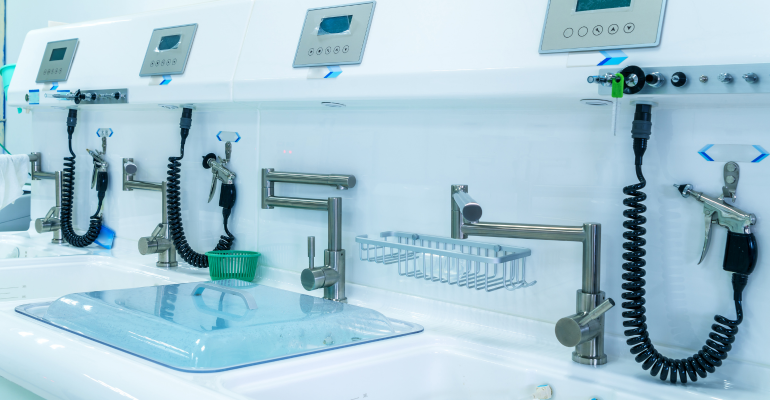Contact between a medical device or surgical tool and a patient's sterile tissue or mucous membranes occurs in all invasive procedures. The introduction of harmful microorganisms that might cause infection is a major concern of operations of this kind. Breach of the host barriers might occur if reusable medical equipment is not thoroughly disinfected or sterilised. The level of disinfection or sterilisation required depends on the object's intended use: critical items (such as surgical instruments that come into contact with sterile tissue), semicritical items (such as endoscopes that come into contact with mucous membranes), and noncritical items (such as stethoscopes that only come into contact with intact skin) all require sterilisation, high-level disinfection, and low-level disinfection, respectively.
Cleaning must always come before disinfection and sterilisation at a high level. When choosing a disinfection or sterilisation procedure, users must weigh the benefits and drawbacks of various approaches. Following these guidelines could enhance disinfection and sterilisation methods in healthcare institutions, lowering the risk of illnesses caused by contaminated patient-care items. Reduced processing times and greater capacities for instrument reprocessing have come from further advances in low-temperature sterilising systems. As the link between environmental surface pollution and health-care-associated illnesses has become clearer, novel techniques for surface disinfection have evolved, including area disinfection systems and antimicrobial surface technologies.
Recent advancements in sterilization technology for use in healthcare institutions have followed a two-and-a-half-decade pattern of concentrating on low-temperature sterilization systems. Shorter cycles, greater materials compatibility, extended instrument capabilities, environmental friendliness, and lower prices are the market's driving forces. Low-temperature sterilization systems that are already on the market have been improved, and at least two other technologies are on their way to the market. The steam sterilization method now has new biological indicators (BIs) with faster readout times.
Furthermore, there have been tremendous developments in technology, specifically in surface disinfection. According to a publication by the American Journal of Infection Control, a growing body of evidence suggests that environmental surface contamination in health care facilities is directly related to healthcare-associated infections (HAI). Existing surface disinfection technologies have been enhanced to overcome respective limitations and create viable alternatives for surface decontamination/disinfection in room-sized regions. These "area decontamination systems" are meant to enhance cleaning and disinfection methods in health care facilities, which studies have demonstrated to be lacking inefficiency. The use of materials having intrinsic antimicrobial characteristics, in the fabrication of common surfaces seen in healthcare institutions is also gaining traction as a way of preventing environmental surface contamination.
The necessity to enhance the cleaning and disinfection of environmental surfaces in healthcare institutions has garnered considerable attention and momentum, and it's now a rising topic in the fight against HAI. While it has always been obvious that disinfecting environmental surfaces is an important practice, current scientific data indicating a clear relationship between these environmental bacteria and HAI has raised awareness of its importance.
This awareness, along with the expenses of HAI, along with the potential loss of reimbursement, has prompted the development and commercialisation of area decontamination/disinfection systems, as well as the use of antimicrobial surface technology. The trend toward microbial control inpatient environments is predicted to continue, and novel materials with intrinsic antimicrobial characteristics for environmental surface applications are likely to emerge.

